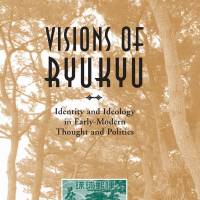Okinawa at times is like heaven and hell in equal measures: tropical beaches next to ammunition dumps. A garrison island where people come to take vacations, the most politicized region of Japan can seem like being teleported back to the agitprop heyday of the late 1960s.
Gregory Smits' "Visions of Ryuku" examines the fallout from conflicting visions of Okinawa from its time as a kingdom, through its seizure by Japan in the Meiji Period (1868-1912), and up to the ambiguous position it occupies today.
Smits shows the dangers of eradicating collective memory and how the forced, transformation of an independent kingdom into a Japanese prefecture can, with a little finessing, appear to be a perfectly natural step in political evolution.
Generations of Okinawans suffered discrimination from the Japanese before, during and after World War II. Japan's assimilation policy was designed to strip away all signs of Okinawa's distinctive culture. They would be Japanese, owing allegiance to the state and the Emperor, but remain marginalized and subjugated. But Smits stresses that the cultural assimilation of Okinawa into Japan remains incomplete.
With a resurgent pride in island identity, reinforced by challenges to Japanese historical narrative and an unflagging resistance movement to the presence of American bases, conflicting visions of the past are unlikely to converge.
Read archived reviews of Japanese classics at jtimes.jp/essential.



















With your current subscription plan you can comment on stories. However, before writing your first comment, please create a display name in the Profile section of your subscriber account page.